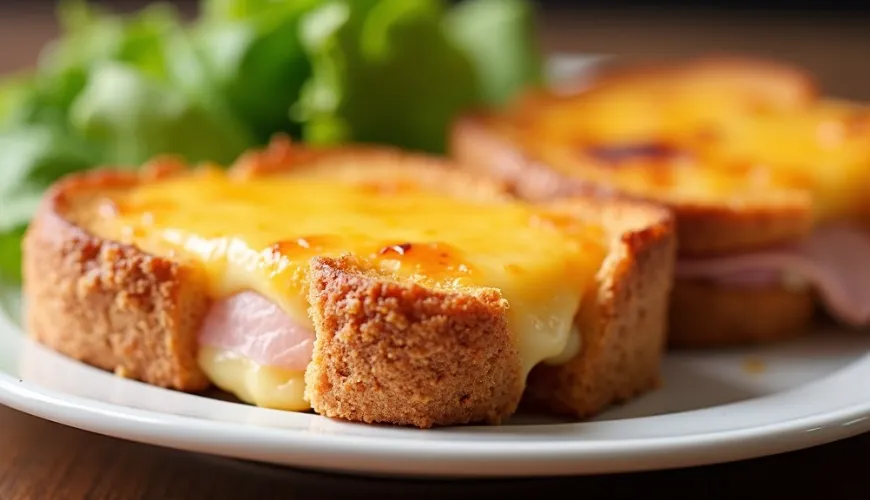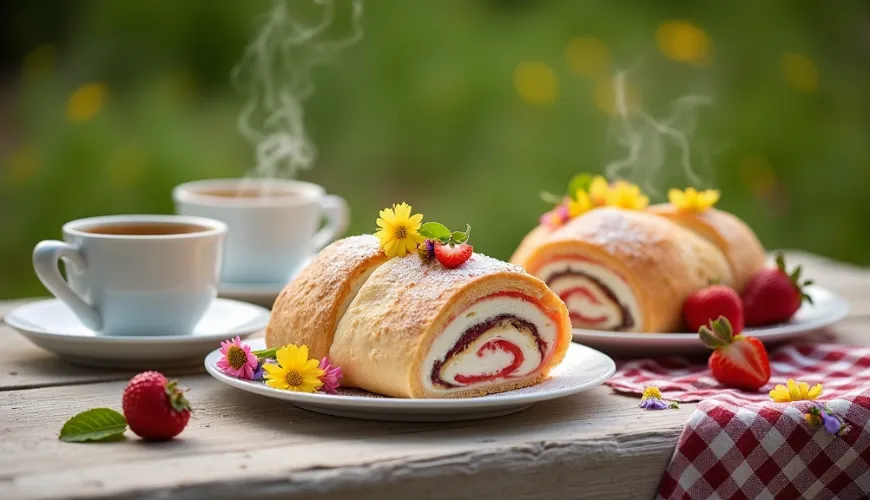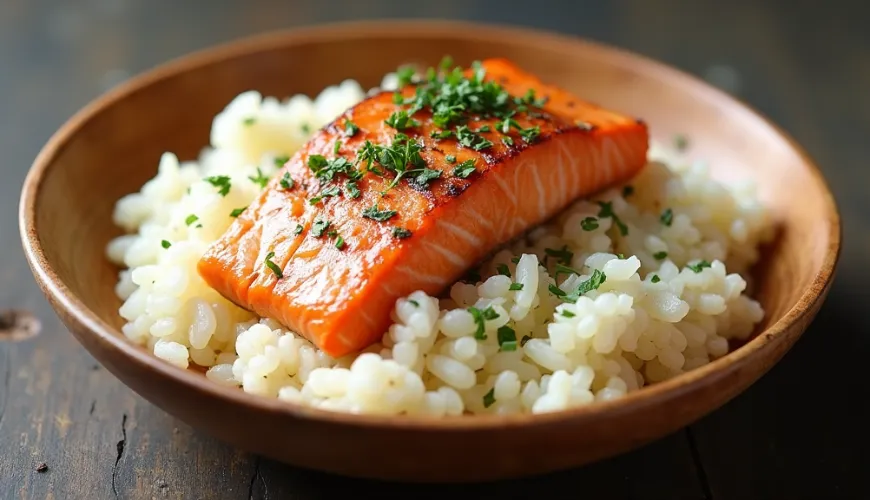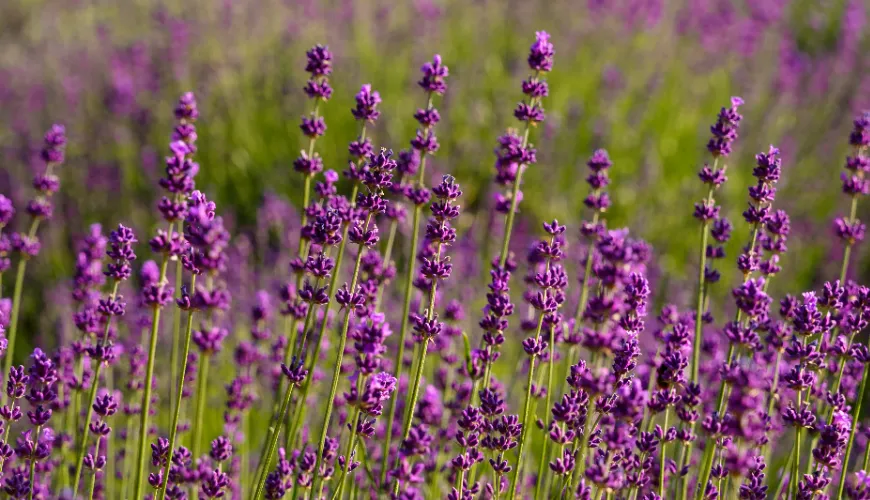
How to Make a Meringue Roulade and Why You Should Try It Today

Fluffy Meringue Roll - A Sweet Magic from Egg Whites That Won't Weigh You Down
The meringue roll is one of those desserts that feels light, delicate, and almost dreamy. Yet, it offers a true delight for the taste buds. Not only does its texture literally melt on your tongue, but thanks to its naturally gluten-free nature, it is also suitable for those avoiding wheat flour. In recent years, the meringue roll has become a sought-after alternative to classic pastries – whether for its lightness, simple composition, or the possibility of creating an original dessert for any occasion. Perhaps that's why it repeatedly appears on tables not only during festive occasions but also as a sweet finish with coffee over the weekend.
In this article, we will explore why the meringue roll is so popular, how to prepare it without unnecessary stress, and how it can be adapted to a healthier lifestyle without sacrificing taste and enjoyment.
What Exactly is a Meringue Roll?
The name "meringue" comes from the French word "baiser," which means "kiss." Perhaps that's why this dessert is so gentle and delicate. Meringue is essentially whipped egg whites with sugar, which is baked (or rather dried) at a low temperature until it gains a crispy exterior and a more moist and soft interior. The roll is created by spreading a filling on this sheet, carefully rolling it up, and letting it set.
The result? A dessert that combines crispness, moisture, and freshness in every bite. The classic filling is whipped cream with fresh fruit, but the possibilities are endless – from mascarpone with honey and nuts to vegan versions with coconut cream and chia jam.
Experienced homemakers know that making meringue can be a bit technique-sensitive – especially whipping and baking require a certain patience. But with a little practice, this seemingly challenging roll becomes a favorite recipe you'll be happy to return to.
When Tradition Meets Sustainability
In today's world, where more and more people are looking for a path to a healthier and more sustainable lifestyle, even traditional recipes are coming under new light. The meringue roll is a great example of how even sweet indulgence can be approached with mindfulness towards the body and nature.
The base of every meringue roll is egg whites – often leftover from other cooking, such as when making Linzer cookies or homemade mayonnaise. Using them for meringue is a sustainable way to minimize food waste. If you have leftover yolks, you can use them in homemade pasta, hollandaise sauce, or add them to pancake batter.
Many approach sugar with respect – rightly so. But even here, there are alternatives. While refined sugar is the most reliable for achieving the typical meringue structure, it can partly be replaced with coconut sugar or erythritol. The result will be a bit less crispy but all the more natural and body-friendly.
As for the filling – here, everyone can unleash their imagination. You can replace classic whipped cream with coconut cream, cashew mousse, or even a curd-yogurt base sweetened with date syrup. Decorations made of fresh fruit, edible flowers, or homemade granola will not only add to the roll's appearance but also its nutritional value.
Meringue Roll in Real Life
Imagine a Saturday afternoon at grandma's. The smell of freshly brewed coffee, children playing in the garden, and on the table appears a plate with a long, shiny dessert topped with cream and sprinkled with raspberries. "Is that your meringue?" asks the neighbor. Grandma smiles and shrugs: "I had some egg whites left over, so I thought why not."
This simple moment shows how easily a recipe can become part of everyday life. No special equipment is needed, just a bit of patience and a desire to create. And what's more – children often help with spreading the filling, decorating, or tasting the fruit, making the whole process a family ritual.
A healthier version can also become part of the diet for those trying to reduce sugar or follow a plant-based diet. The roll can be made from aquafaba (chickpea brine), which excellently mimics the properties of egg whites – ideal for a vegan version. And the result? Just as fluffy, just as tasty, only a little different.
How to Make the Perfect Meringue Roll
If you want to try making your own meringue roll, it's useful to keep in mind a few proven tips:
- Use fresh egg whites, ideally at room temperature, which whip more easily into a firm foam.
- Add sugar gradually, spoon by spoon, and whip until the mixture lightens and thickens.
- Bake at a low temperature (around 150°C), so that the meringue dries rather than bakes.
- Slightly cool the sheet after baking, but roll it while still warm to prevent cracking.
- Add the filling just before serving, to keep it fluffy and prevent the roll from becoming soggy.
People often ask if it's possible to prepare meringue in advance. The answer is yes – but with care. The meringue base itself can last in a dry and cool place for up to two days. However, it's better to leave the filling and final rolling for the last moment to preserve freshness and texture.
When We Combine Tradition with Conscious Approach
A meringue roll can be much more than just a sweet treat. It can become a symbolic bridge between tradition and a modern approach to food. It shows that it's not necessary to give up indulgence in the name of health – just seek balance. In the kitchen, as in life, we don't have to pit extremes against each other. Instead, we can create space for recipes that are not only delicious but also considerate – to us, to nature, and to ingredients.
Whether you opt for the classic version with whipped cream and strawberries or give a chance to the plant-based variant with fruit chia jam, one thing is certain – the meringue roll remains an elegant, friendly, and versatile dessert that always adapts to your taste and lifestyle.
As they say: "Some things are so simple, they're genius." And the meringue roll confirms this with every delicate bite.

